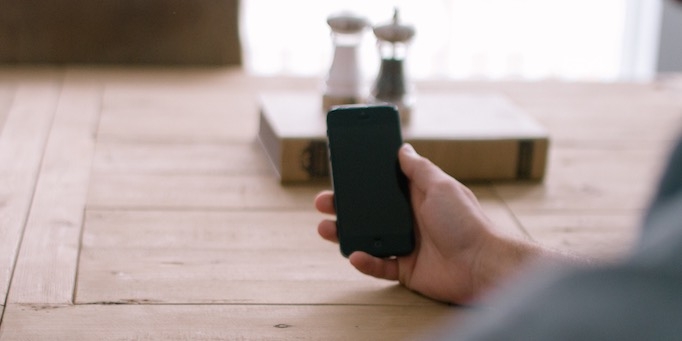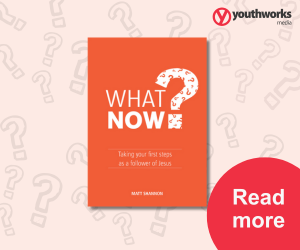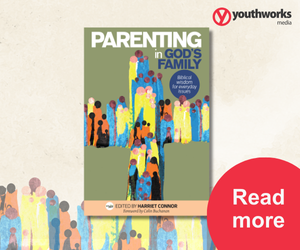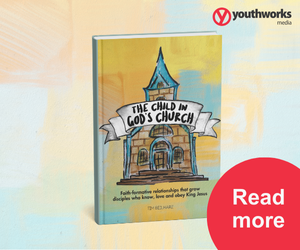
The pros and cons of reading the Bible on your smartphone
With so many upsides to accessing God's Word on your phone, why would anyone use paper instead?
When I was about six, my parents took my sister and I to a Christian bookshop to buy our very first Bibles. My sister chose one with nice pictures. I, on the other hand, chose the biggest one I could find. The text was big enough to draw doodles in between. The spine was about an inch thick with “Large print edition” printed on it. I vaguely remember my mum asking me if I was sure or not.
To my six-year-old mind, all that mattered was the form, not the content. And to me, big was better. It was also more expensive I think, but that was not my responsibility at the time.
In time, I started to appreciate the content of the Bible as well. Unfortunately, my large print Bible hasn’t actually had all that much use lately because it’s so big. But my dad did borrow it for some time because it was easier to read. Incidentally, my mum now has an “Extra large print edition” Bible. I’m sort of envious.
My most used printed Bible is actually a small one. But not a tiny one. It’s about half an A4 page in size and 1.5cm thick. I made a case for it out of old Weet-bix boxes. I used that Bible so much that I have made several cases for it over the years.
It was small enough to carry with me, but big enough to read without straining my eyes. It went with me to youth group. I took it on church camps. I read it on the train, on the plane, in the car, in the spa. Ok, I lie, I’ve never taken it into a spa.
A Bible that wants to be read?
I was once in a group reading the Bible and someone had a new Bible. Every time they opened the Bible on the table, it would close by itself. Someone said, “That’s not a good Bible. It doesn’t want to be read”.
Since then I always look at people’s Bibles and see whether they “want to be read.” It also made me think about how the format affected how easy it was to read.
A few years ago, when I got a smart phone, I downloaded a Bible app and gave it a go. And these days, I do almost all my Bible reading on my phone – whether it’s by myself or with other people. It’s really only because I have it with me all the time.
Interestingly, the Bible has always been on the cutting edge of text formats – from scrolls to books, papyrus to animal skins. And when the printing press was made commercially feasible, the first mass-produced book was the Gutenberg Bible. And now that we have eBooks and phone apps, the Bible is available on just about every mobile device.
Drawbacks of Bible apps
Of course, there are potential drawbacks (like any format)…
Firstly, if you’re looking to set a Bible-reading example for your kids, how will they know when – and how often – you’re reading God’s Word? They may assume you’re catching Pokemon with all that scrolling.
On the other hand, are you disciplined enough to stay focused and not actually start catching Pokemon? I don’t know about you, but I’m easily distracted. I might start reading the Bible, but then moments later, end up on Facebook.
Advantages of Bibles apps
Most people have their phones with them all the time, so having a Bible on your phone makes it available anywhere, anytime. There are lots of good Bible versions available - almost all are free online and many free to download for offline use.
Bible apps can encourage other family members to read the Bible on their phones as more and more people do most of their reading on electronic devices. It can encourage your children to feel like reading the Bible this way is normal and good.
It may not be obvious you're reading your Bible on your phone, so using this format could spur you to be more proactive about talking to your kids about reading the Bible and what you have been reading.
Many Bible apps also allow you to listen to the Bible if you just prefer listening.
Bibles apps vs. printed Bibles
Bibles apps and paper Bibles have advantages and disadvantages that tend to balance each other out.
- Paper Bibles are easier to read in bright light, but Bible apps can be read in darkness.
- Paper Bibles are easy to flick through, but on Bible apps you can search for specific keywords.
- Paper Bibles usually have a larger page, but Bibles apps can allow you to change font, font size and add/remove chapter numbers, verse numbers and headings.
You could probably list pros and cons until His kingdom comes.
Paper Bible or Bible app?
So… which one is right for you?
If you're looking to encourage your kids to read their Bible and/or have never tried reading the Bible on your smartphone, then I’d say, “Have a go!” You might just like it and read more than you would on paper. You will only know if you try it out.
If you’re looking to get Bible-reading encouraged in your home, or you tend to get distracted when reading the Bible on your smartphone, then maybe give paper a second chance! You might just like it and read more than you would on your phone.
I think in God’s eyes, reading his Word is more important than the format you read it in. All Scripture is God-breathed, whether on paper or phone.
For more articles from Growing Faith, subscribe to our monthly e-newsletter.
To hear about the latest books and resources from Youthworks Media, subscribe here.







